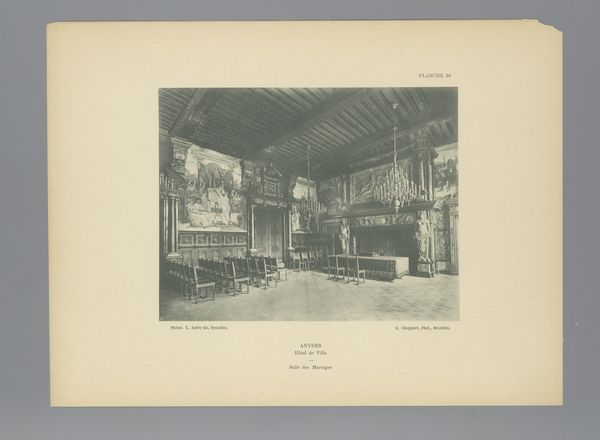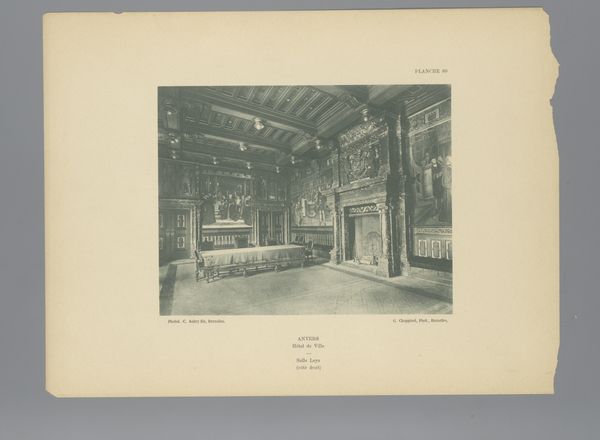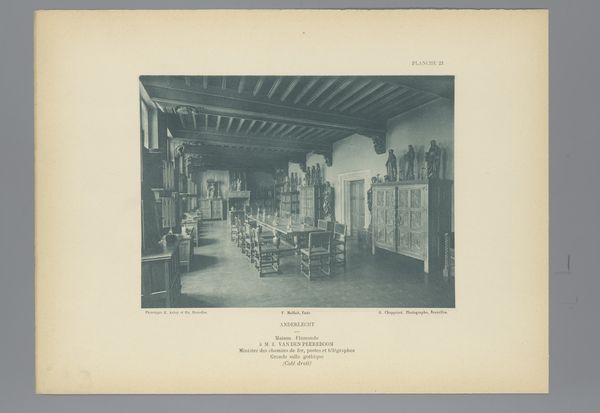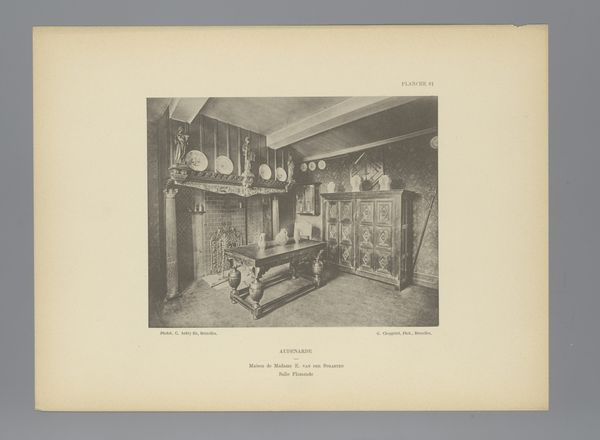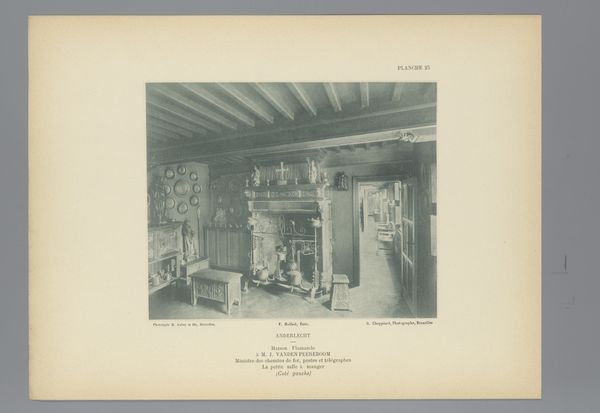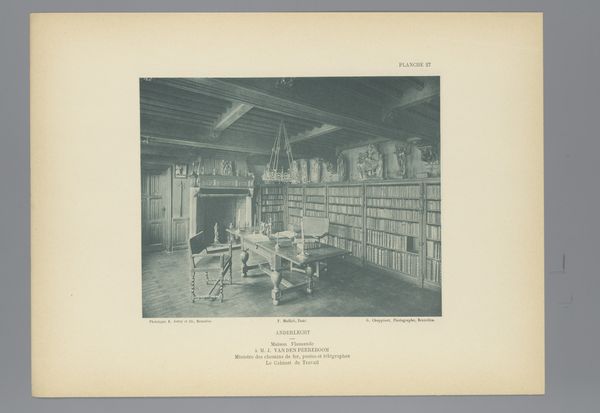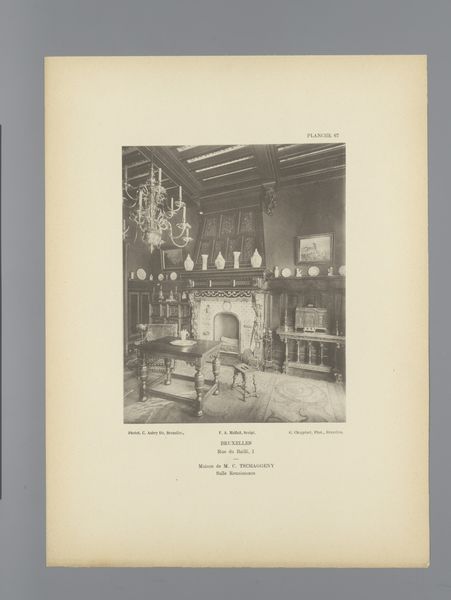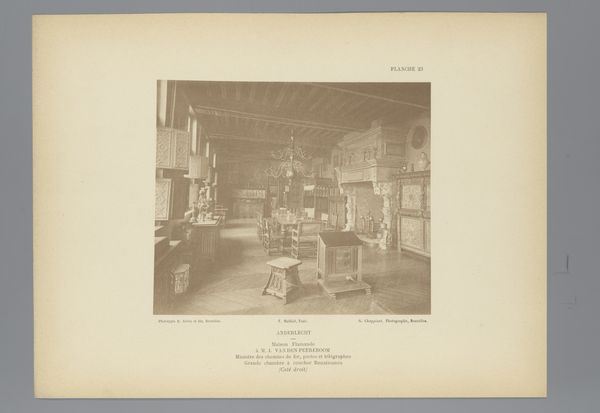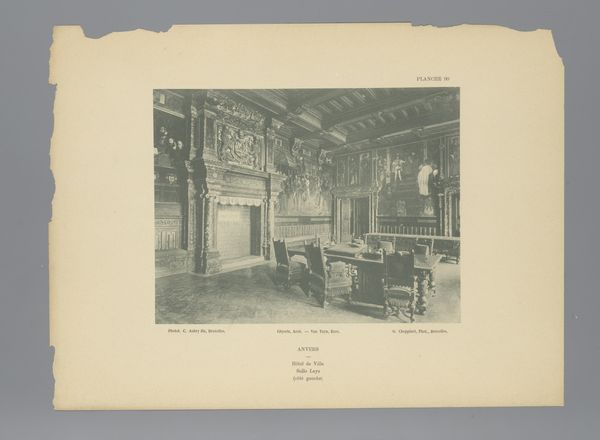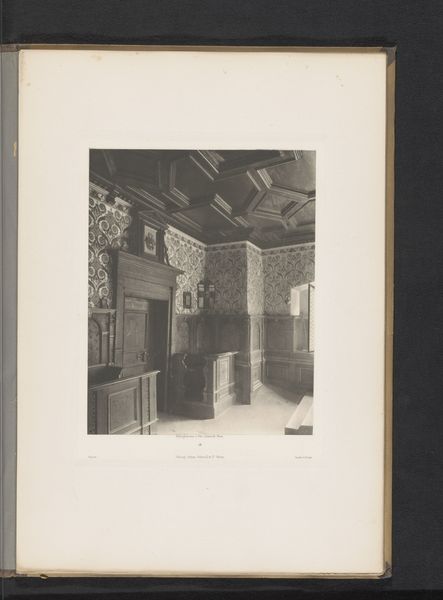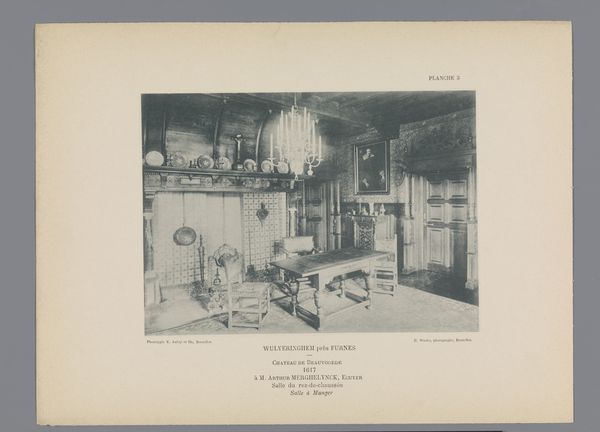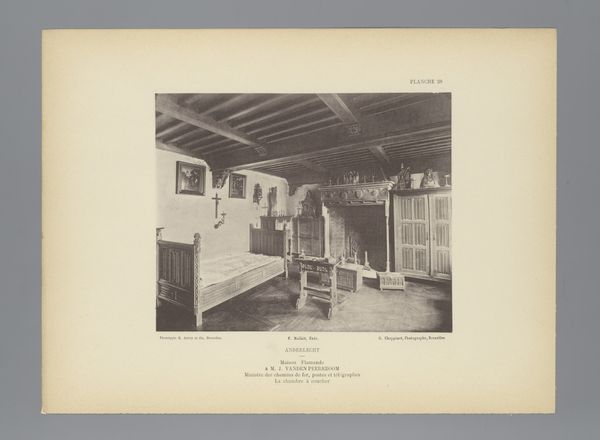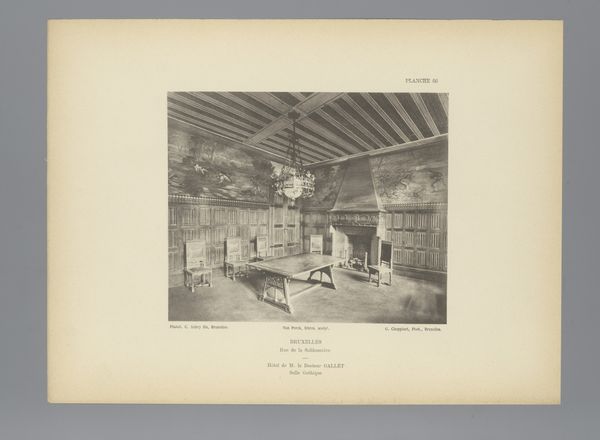
Gezicht op een zaal in Vlaamse stijl in het huis van Ernest Lacquet-Verlent in Gent, België before 1898
0:00
0:00
print, photography
#
aged paper
#
homemade paper
#
paper non-digital material
#
pale palette
#
pastel soft colours
#
pale colours
# print
#
light coloured
#
white palette
#
photography
#
genre-painting
#
paper medium
#
soft colour palette
Dimensions: height 157 mm, width 201 mm
Copyright: Rijks Museum: Open Domain
Editor: This print, taken before 1898 by Jef Wante, depicts a room in Flemish style at the house of Ernest Lacquet-Verlent in Ghent. I’m struck by the formality of the space and how it seems to convey wealth and privilege. How do you interpret this work? Curator: This photograph, beyond its surface depiction, functions as a powerful document of bourgeois identity formation in late 19th-century Belgium. How do we consider the historical weight of 'Flemish style' itself? Its conscious revival signals a reaching back to a specific constructed past, linked to ideas of cultural and regional identity amidst rising nationalism and industrial change. Editor: That's fascinating! I hadn’t thought about it in terms of constructing a national identity. Curator: Indeed. Think about who had access to, and the means to curate, this “authentic” Flemish interior. Consider the implications of display and ownership, power dynamics inherent in preserving and presenting a specific cultural narrative, specifically who gets left out or included within the context of emerging nationalism. What purpose did this curated domestic space serve? Editor: So, the photo isn't just documenting a room; it's capturing a deliberate statement of identity and class. Curator: Precisely. The ‘Salle Flamande’ wasn’t merely a room; it was a stage. The Lacquet-Verlent family isn’t just inhabiting space; they are performing identity. The photographic reproduction, such as this print, extends that performance beyond the physical walls of the house, shaping public perceptions and perpetuating specific cultural ideals. How might those ideals, then, intersect with race, class and gender? Editor: This has definitely changed my understanding of the image. I now see it as more than just a depiction of a room, it reveals societal power. Curator: Agreed. Analyzing it with these frameworks allows us to unpack the complex intersection of art, history, and social power embedded within what might initially seem like a simple genre scene.
Comments
No comments
Be the first to comment and join the conversation on the ultimate creative platform.
